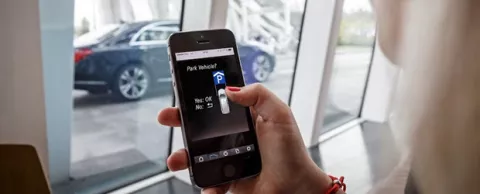
The way we drive and think about cars is changing. Several cars already have some forms of connected technologies and management systems. And car manufacturers are producing cars with complex new connectivity-dependent features like driver assist and collision avoidance. To take advantage of the benefits connected cars can bring — like reducing the number of accidents, traffic jams and pollution — cities need to be able to accommodate them.
And that means they need to evaluate not only their digital communications infrastructure but also the streets, signage and other elements of their transportation systems to support features such as vehicle-to-vehicle and vehicle-to-infrastructure communications and the variety of sensors and cameras the cars will use. The article below outlines approaches real-life approaches as well as very helpful resources city leaders can use to make informed decisions. A gentle reminder: It's far better to be prepared than scramble at the last minute. And less expensive. — Doug Peeples
"The mobility environment in cities is rapidly shifting--primarily due to technology--and this will impact cities' future land-use decision-making, as well as infrastructure planning. Specifically, a majority of cities do not have concentrated efforts to prepare for new transportation innovations." — From City of the Future: Technology & Mobility, a National League of Cities report.
There really isn't any doubt that connected cars, and eventually connected self-driving cars are becoming a reality.
Several car makers and their mobility partners are working feverishly on the technologies and services connected cars will need to accomplish the goals of making cars far safer and more convenient to drive. The examples are just a few of the partnerships working on bringing connected cars to market.
- Lead Partner Cisco is working with Hyundai on in-vehicle connected car technologies.
- Lead Partner Microsoft and Toyota recently expanded their Toyota Connected partnership to accelerate technologies to make driving safer and more convenient. Microsoft also works with Volvo and Nissan.
- BMW, Audi and Lead Partner Daimler, parent company to Mercedez Benz, recently acquired Nokia's "Here' in-dash vehicle navigation system that relies on digital mapping. The three car makers have an eye to the future and the evolution of connected cars to self-driving cars that will depend on accurate, real-time location services.
- And announced this week, the Connected Car Reference Platform from Lead Partner Qualcomm is designed to speed up adoption of advanced technology for next-generation connected cars.
And Apple and Google have been competing to get their smartphones connected to car dashboards so drivers can take advantage of their phone-based navigation, mapping, music and other apps while in their cars. China's biggest search engine, Baidu, expects to be building and shipping self-driving cars within the next five years.
But what exactly are cities supposed to do about connected cars?
Cities have several options, but the two primary areas they need to evaluate are digital communications infrastructure and hard infrastructure (like roads, signage and signaling). As cars become more reliant on input from the technology they're packing than from the driver, cities will need to be confident that their wireless connectivity networks can handle increasing amounts of data from the vehicles, smart phones, sensors and other parts of the infrastructure, according to an article in Move Forward.
And speaking of data, connected cars will create a lot more data and therefore more exposure to cybersecurity risks. Concerns about vulnerability haven't generally been high on the priority list for cities. Now would be an opportune time to reconsider that stance.
Clear and consistent pavement striping and other on-road markings would help both connected cars that provide lane assist and centering features and driverless cars stay on course. As Michigan's Department of Transportation discovered, those markings while 'standardized,' vary from state to state and even within a state. The University of Michigan and the city of Ann Arbor have tested information sharing between connected vehicles and stoplights and pavement sensors to determine help manage traffic flow. And the city continues to add applications to its traffic data network. Ann Arbor has a connected and autonomous car test facility, and is considered a leader in the field.
The city is expanding its fiber optic network to accommodate the large increase in data. It's not cheap, but a key element in preparing for connected cars.
Future-proofing and working with partners
City leaders should be aware that the car makers and their partners are future-proofing their connected cars, building in the ability to expand and upgrade features and technologies throughout the vehicle life cycle. Cities should consider doing the same — and consider bringing in car makers, universities and others to help them.
Other resources
Yes, the League of Cities report was critical of cities, but it also contains guidance and information they can use in their connected car planning. The U.S. Department of Transportation, which has done substantial research on connected and autonomous cars, has compiled a variety of resources like this guide and FAQ to help cities with their planning.
Doug Peeples is a Portland, Oregon-based writer specializing in technology and energy. Follow @smartccouncil on Twitter.



